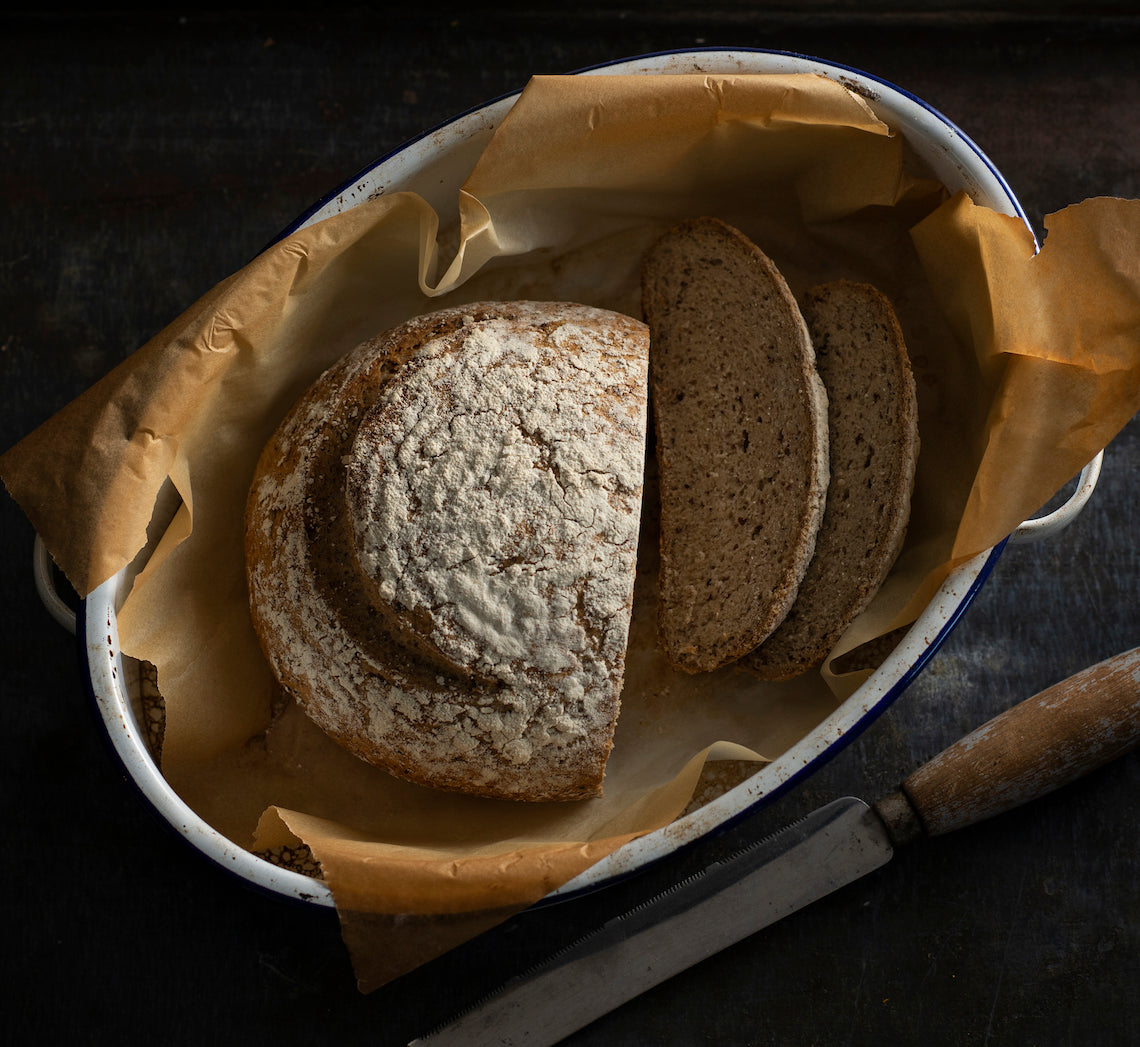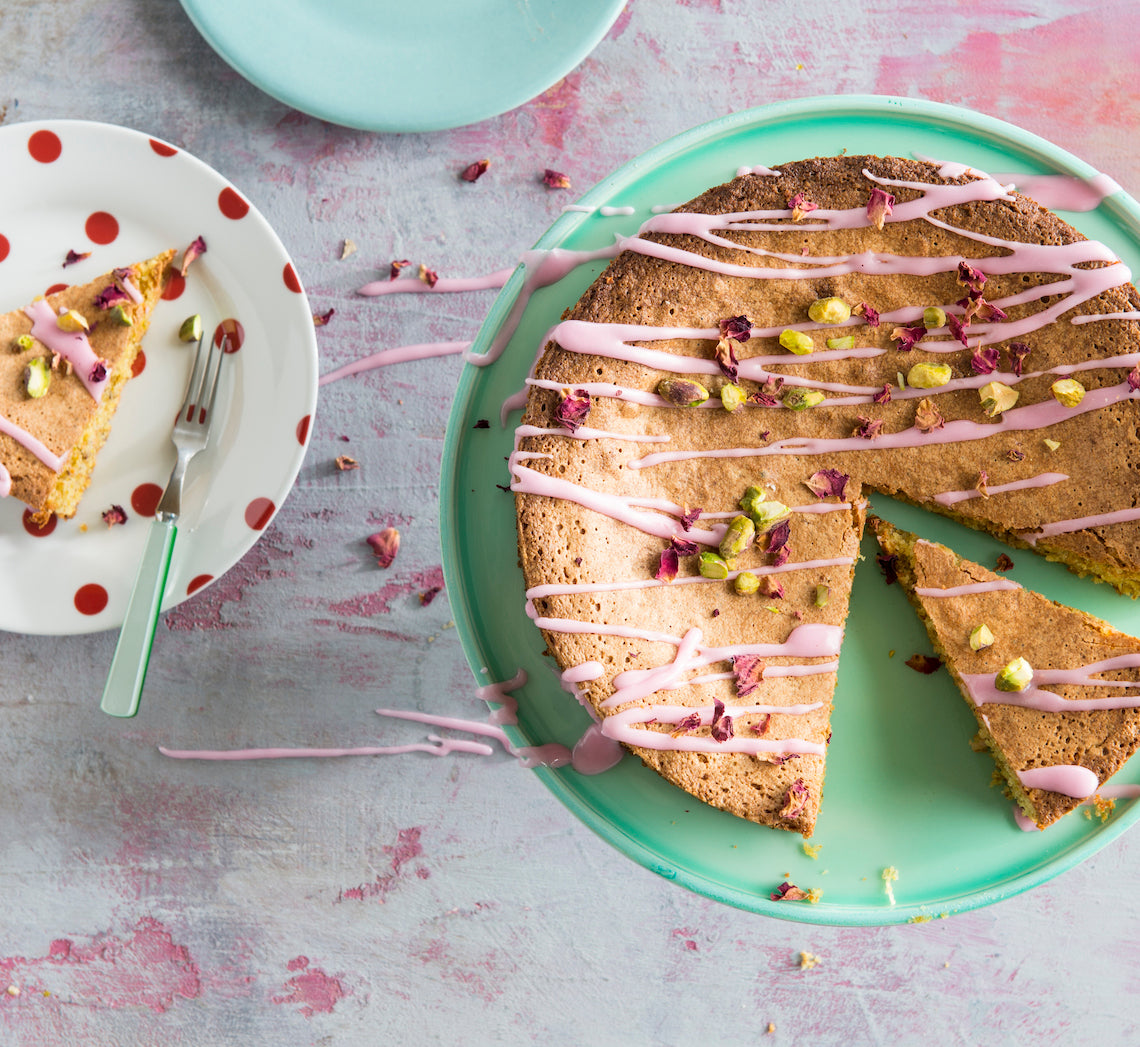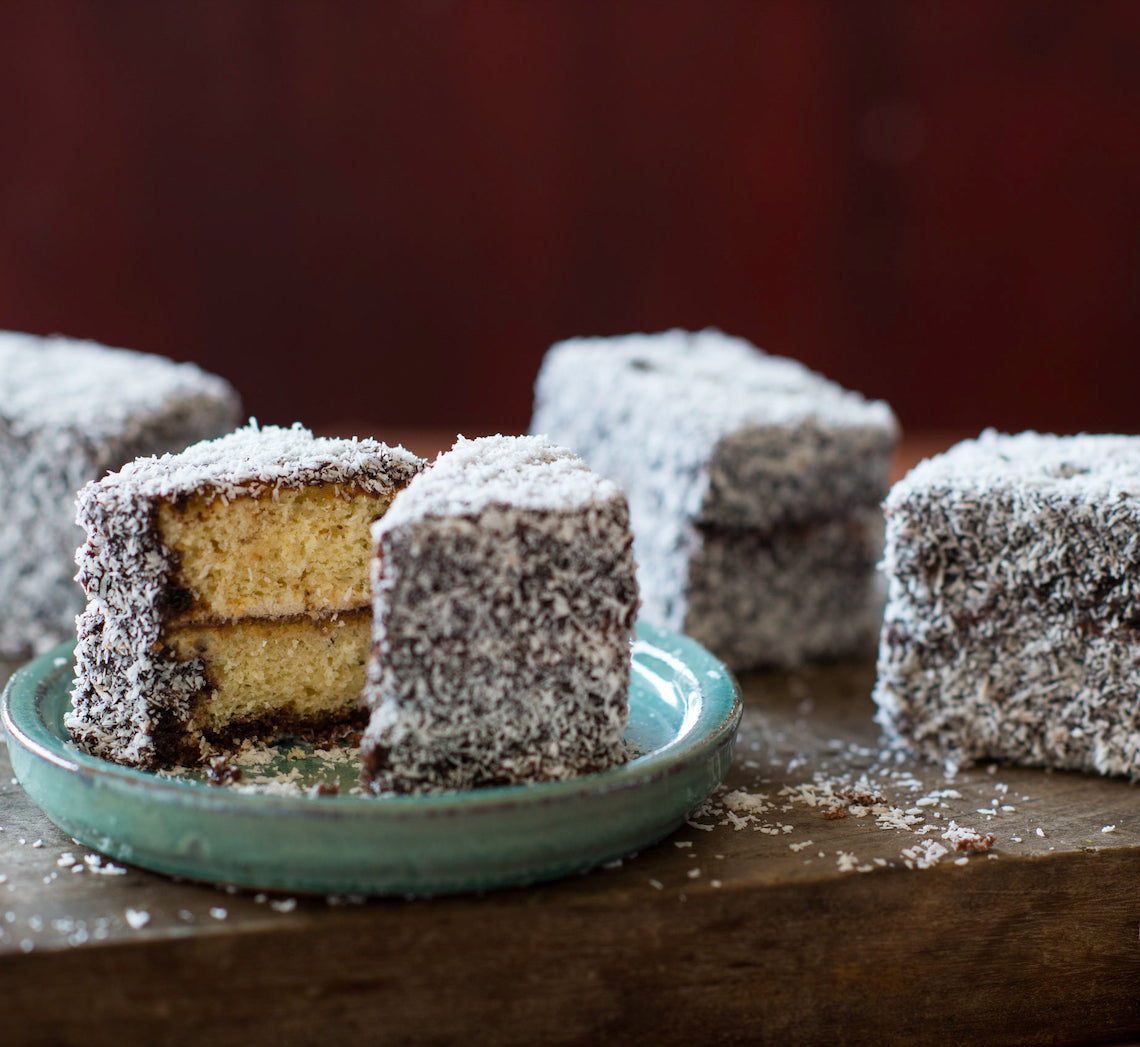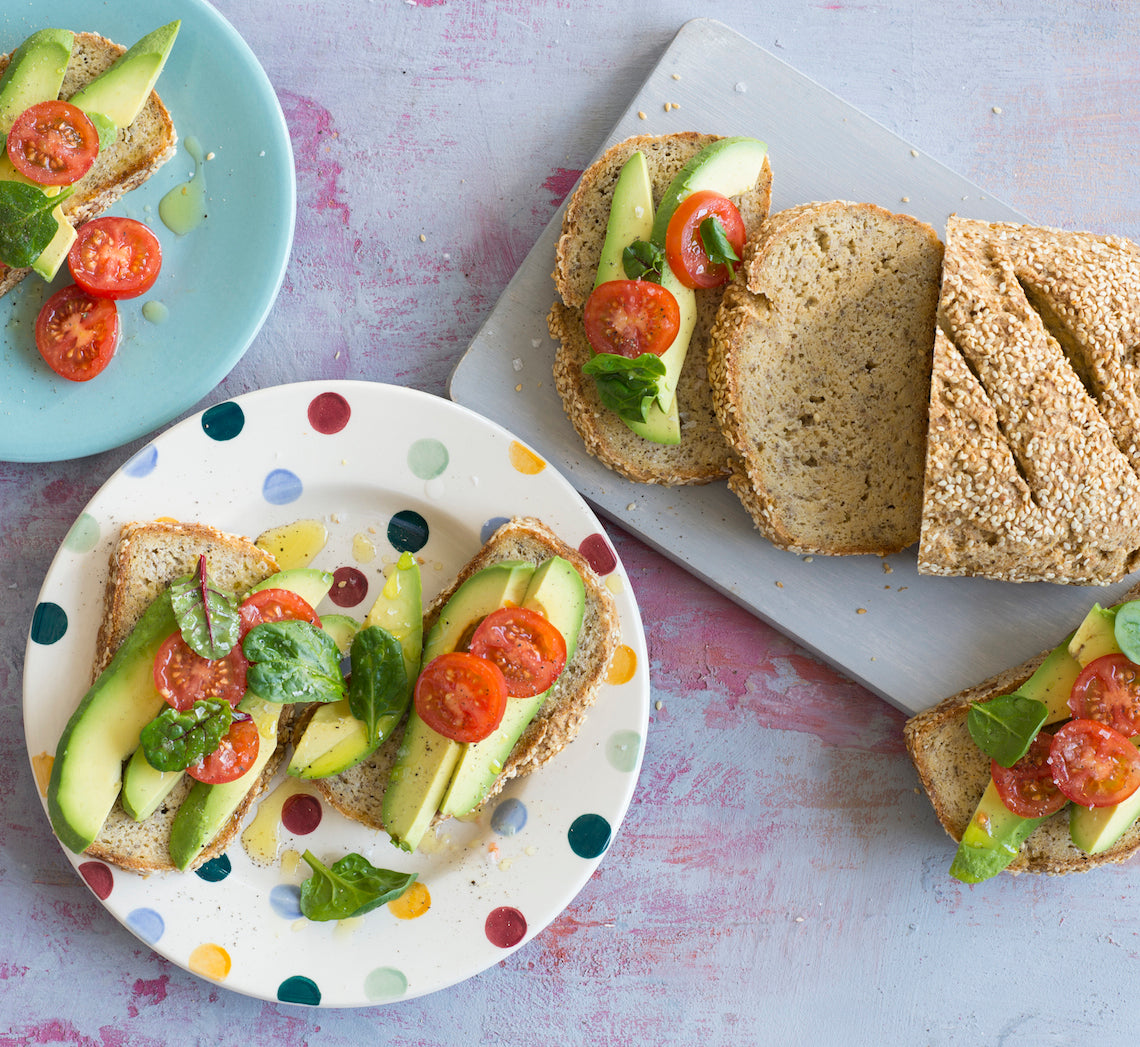- home
- BAKERECIPES
BakeRecipes
Bringing real baking into your home with deliciously simple recipes.

Prep 20min (+2-2.5hr proving and 3hr cooling time)Bake 1hr 10minMakes 1 loaf
This loaf has a beautifully soft crumb and a crisp crust all thanks to a clever combination of gluten-free flours and ingredients. It is great served fresh on the day of baking or toasted after that. This recipe uses a Dutch oven (cast iron pot) or covered enamel roaster which also contributes to the lovely crisp crust and good volume, but it can also be baked in a loaf tin if you wish (see instructions for this at the end of the recipe).
Ingredients
120g (4¼oz) fine brown rice flour, plus extra to dust
100g (3½oz) sorghum flour
60g (2¼oz) potato starch
60g (2¼oz) sweet (glutinous) rice flour
1 teaspoon fine salt
1 x 7g sachet (2 teaspoons/¼oz) instant dried yeast
550ml (18½fl oz) warm water
1 tablespoon honey
20g (¾oz) psyllium husks
20g (¾oz) ground linseeds (ground flaxseed)
Method
- Line a medium 1.5 litre (2⅓pt) capacity bowl with a cloth or clean tea towel and sprinkle the cloth with extra brown rice flour (see Baker’s Tips). Set aside.
- Sift together the brown rice flour, sorghum flour, potato starch, sweet (glutinous) rice flour and salt in a large bowl. Add the yeast and mix to combine. Combine the warm water and honey in a separate medium bowl. Add the psyllium husks and ground linseeds and stir immediately – it will form a gel-like mixture. Add the wet ingredients to the dry ingredients and use a wooden spoon to mix to a soft dough.
- Turn the dough out onto a lightly floured surface and knead for 1-2 minutes or until the dough becomes smooth and pliable. Transfer to a medium bowl, cover with plastic wrap and set aside in a warm, draught-free place for 1 hour or until doubled in size.
- Turn the dough onto a lightly floured surface and knead for about 1 minute or until the dough becomes smooth and pilable again. Shape into a ball and lightly coat the outside of the dough with rice flour. Transfer to the lined bowl, seam side up and cover the dough lightly with any overhanging cloth. Place the bowl in a plastic bag and seal the bag. Set aside in a warm, draught-free place for 1-1½ hours or until the dough has doubled in size.
- About 30 minutes before baking the bread preheat oven to 250°C/480°F (230°C/440°F fan-forced). If using a Dutch oven (cast iron pot) place this on the middle rack in your oven to preheat (if using an enamel roaster there is no need to preheat the roaster).
- Line an oven tray with a piece of non-stick baking paper. Uncover the dough in the bowl and then place the upturned lined oven tray on top and invert the dough
onto the tray. Use a small sharp knife or bread lame to score the top of the loaf with a 1cm (½in) deep cut. Use the baking paper to carefully transfer the dough to the preheated Dutch oven or enamel roaster. Add about 2 tablespoons of water to the pot or roaster under the baking paper. Cover with the lid immediately and place in the preheated oven. Bake for 30 minutes. Remove the lid, reduce the temperature to 230°C/440°F (210°C/410°F fan-forced) and bake for a further 40 minutes or until the loaf is baked through and sounds hollow when tapped on the top. (See Baker's Tips.) - Use the baking paper to remove the bread from the pot and transfer to a wire rack to cool completely before slicing (this will take about 3 hours).
Baker's Tips
- You can use a banneton (traditional bread proving basket) instead of the bowl to shape the loaf if you wish, lining it with a rice flour- dusted cloth.
- A soft, open-weave tea towel or cloth (preferably linen or muslin) is best to use to line the bowl or banneton.
- You will notice that the baking time for this bread is quite lengthy. This is because gluten-free breads, due to the flours they use, need a lot more moisture than their gluten-containing counterparts made with wheat flour. This extended baking will ensure that most of this moisture evaporates so the final crumb texture doesn't end up unpleasantly gummy. Also, as tempting as it may be, don’t slice the loaf until it has cooled completely – if you do, the crumb will compress and, again, it will give it a gummy texture.
- This bread will keep in a paper or cloth bag for up to 2 days.
- To freeze whole or in slices, seal in a plastic bag and freeze for up to 3 months. Thaw at room temperature or toast straight from the freezer.
Variation
Gluten-free Sandwich Bread
This dough can also be baked in a loaf tin. In Step 4 shape the dough into a log and place in a 9.5cm x 19.5cm (3¾in x 7¾in), base measurement, loaf tin that has been greased with olive oil and sprinkled with 1 tablespoon sesame seeds. Prove as in Step 4. Brush the top of the loaf with a little more olive oil and then sprinkle with more sesame seeds. Bake in preheated oven at 200°C/400°F (180°C/350°F fan-forced) for 1 hour and 20 minutes or until baked through and the loaf sounds hollow when tapped on the top. Remove from the oven and allow to stand for 5 minutes before transferring the loaf to a wire rack to cool completely.
Photography by Alan Benson.
This recipe is from our Gluten-free Baking Essentials online course, a no-fuss 'real' guide to the world of gluten-free baking.

Prep 30min (+1hr cooling time)Bake 30minMakes 8-10 serves
This gluten-free and dairy-free recipe, with its subtle lemon flavour teamed with an aromatic rosewater icing and light nutty texture, is the perfect afternoon-tea cake. It will dip slightly in the centre due to its delicate nature but this is just a sign of how lovely and light it is.
Ingredients
Light olive oil, to grease
100g (1 cup) almond meal
100g (¾ cup) raw unsalted pistachios, toasted and finely ground
90g (½ cup) instant polenta or wholegrain corn flour
2 teaspoons gluten-free baking powder
3 eggs, at room temperature
165g (¾ cup) caster sugar
125ml (½ cup) light olive oil
1 lemon, rind finely shredded, juiced
extra raw unsalted pistachios, toasted and coarsely chopped, to decorate
dried rose petals (optional), to decorate
Lemon and rosewater icing
125g (1 cup) pure icing sugar
1 tablespoon (about) strained fresh lemon juice
1 teaspoon rosewater
gluten-free pink or rose food colouring, to tint
Method
- Preheat oven to 180°C (160°C fan-forced). Brush a 20cm springform cake tin with olive oil and line the base with non-stick baking paper.
- Place the almond meal, ground pistachios, polenta and baking powder in a medium bowl and use a whisk to stir to combine and remove any lumps. Set aside.
- Use an electric mixer with a whisk attachment to whisk the eggs and sugar on medium-high speed until thick and pale and a ribbon trail forms when the whisk is lifted. Whisk in the olive oil, 2 tablespoons of the lemon juice and the lemon rind.
- Add the dry ingredients to the egg mixture and use a spatula or large metal spoon to fold until evenly combined. Pour into the prepared cake tin and bake for 30 minutes or until a skewer inserted in the centre comes out clean. Stand the cake in the tin on a wire rack for 10 minutes before removing the sides of the tin. Set aside to cool completely.
- To make the lemon and rosewater icing, sift the icing sugar into a medium bowl. Gradually stir in the 1 tablespoon lemon juice and the rosewater until the mixture is smooth and has a thick coating consistency, adding a little more juice if needed. Cover with plastic wrap and set aside at room temperature until ready to use.
- Drizzle the cooled cake with the icing and then sprinkle with extra pistachio nuts and dried rose petals, if using. Set aside for 30 minutes or until the icing has set before serving in wedges.
Baker's Tips
- This cake will keep in an airtight container at room temperature for up to 4 days.
This recipe is from Anneka's SBS Food online column Bakeproof: Gluten-free baking. Click here for more Bakeproof columns and recipes.
Photography by Alan Benson.

Prep 40min (+ 40min cooling and 20min chilling time)
Bake 20minMakes 9
Gluten-free cakes are sometimes hard to come by. Moist and flavoursome, these lamingtons won’t disappoint. Those with gluten or wheat intolerances and sensitivities won’t ever have to compromise if wanting to enjoy this Australian classic.
Ingredients
80ml (⅓ cup) thickened cream, whisked to firm peaks180g (2 cups) desiccated coconut, to coat
Gluten-free buttercake
175g (1¼ cups) purchased gluten-free plain flour mix2½ teaspoons gluten-free baking powder
165g (¾ cup) caster sugar
125g unsalted butter, cubed, softened
2 eggs, at room temperature
80ml (⅓ cup) milk
2 teaspoons natural vanilla extract or essence
Chocolate icing
465g (3¾ cups) pure icing sugar55g (½ cup) cocoa powder
150ml boiling water
1½ teaspoons vanilla essence
Method
- To make the gluten-free buttercake, preheat the oven to 180°C. Grease a 20 x 30cm (base measurement) shallow cake tin and line the base and two longs sides with one piece of baking paper.
- Put the flour, baking powder, sugar, butter, eggs, milk and vanilla in a large mixing bowl. Use an electric mixer to beat on low speed until combined. Increase the speed to medium and beat for 3 minutes or until the mixture is well combined and very pale in colour. Spoon the mixture into the lined tin and spread evenly using the back of a spoon. Lightly tap the tin on the bench 3 times to get rid of any excess air bubbles.
- Bake for 20 minutes or until cooked when tested with a skewer. Cool for 5 minutes in the tin, then turn onto a wire rack to cool completely (this will take about 40 minutes).
- To make the Chocolate Icing, sift the icing sugar and cocoa powder into a medium bowl. Add the boiling water and vanilla and stir until smooth (it should be the consistency of pouring cream).
- Trim the edges of the cooled cake and then cut in half to form two layers about 20 x 15cm. Spread one half of the cake with a little of the Chocolate Icing and then spread whipped cream. Top with the remaining cake half. Chill for 20 minutes or until the cream is firm enough to cut the cake.
- Use a sharp serrated knife to cut the layered cake into 9 portions (about 6.5 x 4.5cm each). Run a palette knife around the cut surface of each lamington to remove any excess cream.
- Spread the coconut on a tray or plate. Rest a cake portion on a fork, dip into the chocolate icing and then and spoon the icing over the top and sides to completely coat. Allow any extra icing to drip off. Roll the cake in the coconut to coat evenly. Place on a wire rack. Repeat with the remaining cake portions, icing and coconut.
Baker's Tips
- If the icing becomes too thick while you are coating the cake pieces, stir in enough extra boiling water, adding it a teaspoon at a time, to thin to the right consistency.
- These lamingtons will keep in an airtight container in the fridge for up to 2 days. Stand at room temperature for at least 30 minutes before serving.
This recipe is from Anneka's SBS Food online column Bakeproof: Lamingtons. CLICK HERE for more Bakeproof recipes.
Photography by Alan Benson.

Prep 30min (+1hr30min cooling time)Bake 1hr 10minMakes 1 loaf
This bread is almost the complete opposite of most commercially made gluten-free breads - wonderfully substantial (it won’t ‘dissolve’ in your mouth), moist and flavoursome without containing any gums. The key is the inclusion of psyllium husks and chia seeds to give the dough flexibility and structure in the absence of gluten. It’s great fresh, but toasting really brings out the nuttiness of the flours used.
Ingredients
150g (1 cup) sorghum flour
75g (½ cup) millet flour
70g (½ cup) brown rice flour
65g (½ cup) sweet (glutinous) rice flour
90g (½ cup) fine polenta
1½ teaspoons fine sea salt
625ml (2½ cups) lukewarm water
7g (1 sachet) instant dried yeast
2 tablespoons honey
2 tablespoons light olive oil, plus extra to grease
25g (⅓ cup) psyllium husks
50g (¼ cup) chia seeds
2 tablespoons sesame seeds, to coat and sprinkle
Method
- Combine the sorghum, millet, brown rice and sweet rice flours, polenta and salt in a large bowl.
- Combine 60ml (¼ cup) of the lukewarm water, yeast and 1 teaspoon of the honey in a small dish and whisk to combine with a fork. Set aside in a warm, draught-free place for 5 minutes or until frothy.
- Meanwhile, use a balloon whisk to whisk together the remaining 560ml (2¼ cups) lukewarm water, remaining honey, olive oil, psyllium husks and chia seeds until evenly combined. Set aside for 3 minutes or until the mixture thickens slightly.
- Whisk the yeast mixture into the psyllium husk mixture. Add to the dry ingredients and use a wooden spoon to mix to a soft, slightly sticky dough.
- Cover the bowl with plastic wrap and set aside in a warm, draught-free place for 1½ hours or until risen slightly and is spongy in texture.
- Grease a 11.5cm x 21cm (base measurement) loaf tin with a little extra oil and sprinkle with 1½ tablespoons of the sesame seeds to coat lightly. Turn the dough onto a benchtop, shape into a 20cm log and place in the greased tin. Brush the top with a little water and sprinkle with the remaining sesame seeds. Cover with plastic wrap and set aside and place in a warm, draught-free place for 1 hour or until well risen.
- Preheat the oven to 200°C (180°C fan-forced).
- Use a sharp knife to cut 4 diagonal slits across the top of the loaf. Bake 1 hour and 10 minutes or until golden, cooked through and sounds hollow when tapped on the top.
- Turn the loaf out onto a wire rack and set aside to cool completely - this will take about 1½ hours) before slicing.
Baker's Tips
- This bread is best kept in a cloth or paper bag at room temperature in a cool spot where it will keep for up to 5 days.
- To freeze, place whole or sliced in a sealed freezer bag or airtight container and freeze for up to 3 months. Thaw at room temperature or toast slices straight from the freezer.
This recipe is from Anneka's SBS Food online column Bakeproof: Gluten-free baking. Click here for more Bakeproof columns and recipes.
Photography by Alan Benson.






